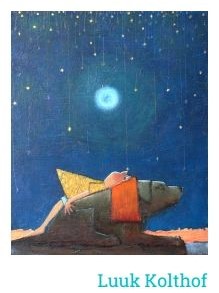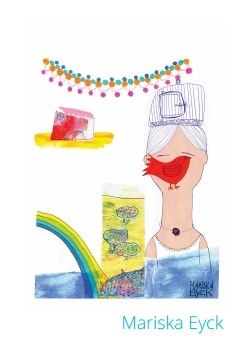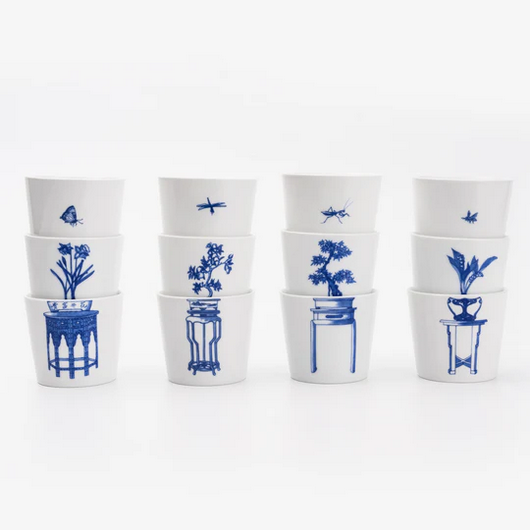In August, three different guest artists will be exhibiting on our walls. Three artists with different approaches, different working methods and media, and each with their own visual language. Yet there are also similarities to be found. Their work often initially elicits a (smile) smile and, for those who like to look further into the depths, there is more to discover behind the light-heartedness.
Visit the exhibition TRICOLORE in Galerie Zône in Leiden with work by Mariska Eyck, Li Libo and Luuk Kolthof.
Mariska Eyck (Leiden) is known for her colorful, imaginative drawings that are for sale as fine art prints, books or postcards. In this exhibition she shows larger, original work on paper. She uses many different materials, from ballpoint pen to acrylic paint; she cuts and pastes away. Mariska: “‘A day not drawn is a day not lived’. I draw and paint a lot, it’s my life. I like to work with a lot of color, but with few rules or boundaries. I hope that my work conveys light, air and JOY.”
Libo Li (Amsterdam) grew up in China. She specialized in ceramics, including at the Jingdezhen Ceramic Institute. In her studio she creates objects that are rich in tradition and history, yet functional. She likes to make work that seduces people to smile. Previously, two-part Bonsai cups of hers were on display in Zône. In this exhibition, Libo shows a special series of ceramic paintings in (Chinese) blue and white. They are based on famous paintings by Frida Kahlo, Vermeer, Van Gogh and other artists. Libo Li (alias Lilibo) also has a new series of playful cups for sale in our temporary display case.
Luuk Kolthof (Leiden) wants to be a free bird, but unfortunately his character does not cooperate. That is why he lovingly captures his beaked sources of inspiration in oil paint. The birds do not remain anonymous creatures for him. By adding a human element, they feel more like portraits with a story. When the birds are tired of being models, Luuk dives into his rich fantasy world to bring out interesting images. And to paint. Where his larger, ‘poetically absurdist’ work has a more organic appearance, the small panels (which he now exhibits next to his birds) are much more geometric in character. Scenes from fairy tales that do not exist, but which take the viewer to unknown worlds.




